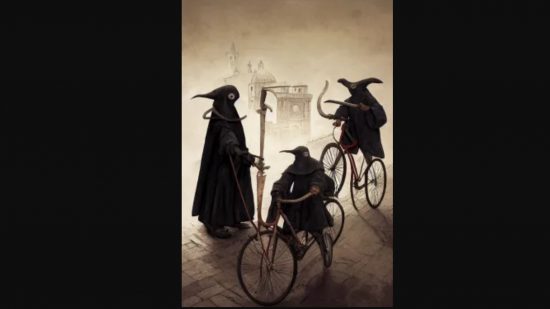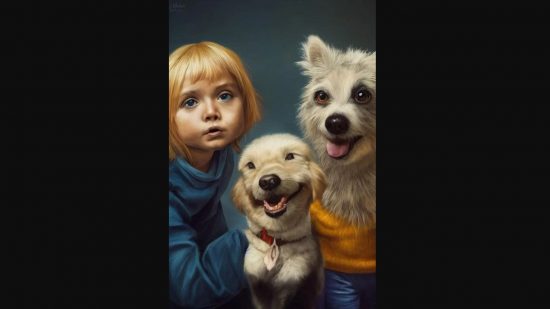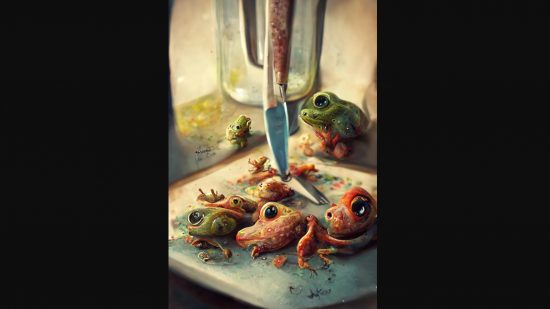The board game Dixit is much loved for its whimsical abstract artwork, which is central to the game’s storytelling mechanics. It’s one of software engineer Jared Saxton’s favourite games, thanks to its quick setup, shallow learning curve, and the creative thinking it encourages. The 49-year-old boardgamer from Utah, USA, has house rules for the game already, but was keen to take it a step further. He wanted to make his own version of the board game, “with a darker theme, that would be a twist on the more lighthearted official Dixit expansion decks”.
But realising that, despite his background in digital art, illustrating 84 brand new cards was going to be quite the time sink, Saxton turned to AI he’d been experimenting with for a few months to help out, using the popular program Midjourney, which translates text prompts to artwork, to “direct” digital illustrations that would take a fraction of the time to produce.
Sure enough, though Saxton used iPad tool Procreate to touch up the AI-generated digital artwork, Midjourney created an excellent range of dark Dixit cards in short order, spitting out a sea of uncanny valley faces, disturbing creatures, and sinister shadows, that were ideal for what he had in mind.
And the response to Saxton’s version of the Dixit board game’s cards, both online and in person, has been overwhelmingly positive. “We just started playtesting the deck, and my family loves it,” he says. “The illustrations are ambiguous, surreal, and weird, which makes playing more interesting and fun.”
As a result of the positive feedback and buzz, Saxton was inspired to combine his Dixit cards and original rules to create Blursed (the title a combination of blessed and cursed), his own card game which he plans to start a Kickstarter for soon.
As for how AI art will affect the board game world, Saxton feels it has plenty of potential. A “lack of interesting game assets can hamper an otherwise great game,” he says. So AI can help game designers “realize their artistic vision even when they don’t necessarily have drawing or painting skills.”
Naturally, the skyrocketing progression of AI art in recent months has some artists worried about job security, but Saxton feels AI will prove most valuable as a conceptualising tool. “I think professional game artists will start to adopt AI as an upstream step to brainstorm and enhance (but not replace) their current workflow,” he says.
“Forward-thinking artists will start to use an equal amount of ‘prompt crafting’ and traditional digital illustration to create final game assets.”
You can find more information about Saxton’s card game, Blursed, at its website. And if you’re a Dixit fanatic, check out our lists of funny card games and easy card games, for more tabletop games you might enjoy.








